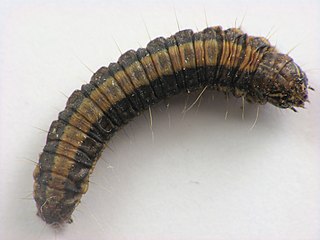Bucaea is a genus of tiger moths in the family Erebidae. The moths in the genus are found in Hindustan.

Diduga is a genus of moths in the family Erebidae.

Phragmatobia is a genus of moths in the subfamily Arctiinae described by Stephens in 1828. Many tiger-moth species of small and medium size were described within this genus. However, only a few are related to the type species.
Soloe is a genus of moths in the family Erebidae. The genus was erected by Francis Walker in 1854.

Hypsopygia is a genus of moths belonging to the family Pyralidae. Though fairly small, they are large among their relatives. It was described by Jacob Hübner in 1825.

The Chrysauginae are a subfamily of snout moths. They are primarily Neotropical and include about 400 described species.

The Epipaschiinae are a subfamily of snout moths. Almost 600 species are known today, which are found mainly in the tropics and subtropics. Some occur in temperate regions, but the subfamily is apparently completely absent from Europe, at least as native species. A few Epipaschiinae are crop pests that may occasionally become economically significant.

Endotricha is a genus of snout moths. It was described by Philipp Christoph Zeller in 1847.

Odontiinae is a subfamily of moths of the family Crambidae. The subfamily was described by Achille Guenée in 1854.
Bucaea fumipennis is a moth of the family Erebidae. It was described by George Hampson in 1891. It is found in the Nilgiri Mountains of India.
Diduga albicosta is a moth of the family Erebidae first described by George Hampson in 1891. It is found in India's Nilgiri Mountains, Sri Lanka and on Bali.
Diduga albida is a moth of the family Erebidae first described by George Hampson in 1914. It is found in New Guinea.
Diduga annutata is a moth of the subfamily Arctiinae first described by George Hampson in 1900. It is found on Sumbawa and Borneo.

Diduga flavicostata is a moth of the family Erebidae first described by Snellen in 1879. It is found on Java, as well as in Australia, India, Sri Lanka, Myanmar, Malaysia, China and Japan.
Diduga pectinifer is a moth of the family Erebidae first described by George Hampson in 1900. It is found on Borneo.
Diduga rufidiscalis is a moth of the subfamily Arctiinae first described by George Hampson in 1898. It is found in Assam, India.
Diduga trichophora is a moth of the family Erebidae first described by George Hampson in 1900. It is found on Bali, Java, Sumatra and Borneo, as well as in southern Myanmar. The habitat consists of lowland forests.







